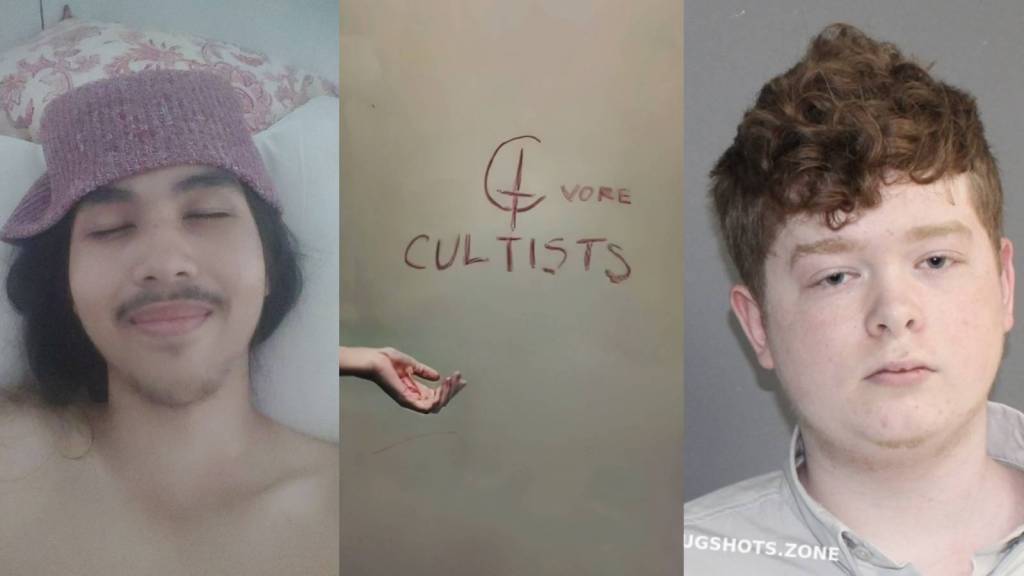A manhunt is underway for the person who detonated a home-made bomb on a crowded London subway carriage Friday morning, injuring at least 22 people in an incident authorities say was a terror attack.
Commuters on the District line reported a loud explosion that sent a fireball roaring down the carriage as their train entered Parsons Green station in west London at about 8.20 a.m. local time. The blast triggered a stampede of terrified passengers, sending some running along the train tracks, according to reports.
Videos by VICE
“I heard a boom and when I looked there were flames all around,” Sylvain Pennec, a software developer, told the Guardian.
He posted video to Twitter of the device suspected of having caused the explosion, which appeared to be a white bucket in a supermarket bag with wires protruding from it.
Assistant Commissioner Mark Rowley, of London’s Metropolitan Police, said the explosion was caused by the “detonation of an improvised explosive device.” Hundreds of detectives were conducting urgent inquiries, scouring CCTV, and speaking to witnesses in cooperation with MI5 – Britain’s domestic counterintelligence and security agency. Sky News reported on Friday afternoon that its sources said police had identified a suspect after reviewing CCTV footage, but the police media team said they were not aware of this.
London Mayor Sadiq Khan confirmed that a manhunt was underway for whoever planted the device on the crowded train, although Prime Minister Theresa May later said the official terror threat level would not be raised and would remain at “severe,” the second-highest rating.
“That means that a terrorist attack is highly likely. But this will be kept under review as the investigation progresses,” she said. “The public should go about their daily lives but remain vigilant.”
The BBC and Sky News reported that the device had a timer attached to it, which security sources said indicated the bomb was detonated remotely. The Guardian reported that investigators later removed what appeared to be a circuit board from the scene.
The fact that the bucket was not destroyed by the blast indicates the bomb did not detonate properly, and the intended destruction was much greater. The bucket and other components may yield valuable forensic evidence in the hunt for the bomber; investigators will also draw on footage from the extensive CCTV network that covers London’s public transport system.
Police said a “number of people” had been injured, while ambulance services said they had taken 22 people to hospital, none of whom were thought to be in a serious or life-threatening condition. Rowley said that most of those hospitalized had suffered “flash burns” in the blast; witnesses reported that others were injured in the ensuing stampede.
“This fireball above my head has come and singed all my hair. I’ve got burn marks to the top of my head,” one of the injured, who gave his name as Peter, told the BBC.
Robyn Frost, a commuter who arrived at the station in the immediate aftermath of the blast told the BBC that “there was blood on the floor and people running down the stairs screaming ‘get out.’ People were coming out of the station covered in blood.”
Armed police and emergency services, including a bomb disposal unit, quickly descended on the scene. Parsons Green station was closed and the area in a 50 meter radius of the device evacuated in case it exploded.
About two hours after the blast, London’s Metropolitan police confirmed that Deputy Assistant Commissioner Neil Basu, the national counterterror chief, had declared it was a terrorist incident. Prime Minister Theresa May has called a meeting of the top-level Cobra emergencies committee on Friday afternoon to discuss the government’s response.
Sadiq Khan issued a statement saying the city “utterly condemns the hideous individuals who attempt to use terror to harm us and destroy our way of life. As London has proven again and again, we will never be intimidated or defeated by terrorism.”
President Donald Trump also weighed in on Twitter, using the attack to defend his travel ban:
Asked about Trump’s claims that the bomber had been “in the sights of Scotland Yard,” May replied: “I never think it’s helpful for anybody to speculate on what is an ongoing investigation.”
Thirty-six people have been killed in four terror attacks in the U.K. so far this year – three of them in London, and a fourth at an Ariana Grande concert in Manchester. Three of the attacks have been committed by Islamists, with one – a ramming attack outside a north London mosque – carried out by a suspected right-wing extremist.
The country’s terrorism threat level is at severe, meaning an attack is “highly likely.” Police say they have foiled six other significant terror plot so far this year.
London’s transport system has been hit by terrorists before: in 2005, 52 people were killed when four homegrown jihadists launched simultaneous suicide bomb attacks on three London subway trains and a bus.
Otso Iho, a senior analyst at Jane’s Terrorism and Insurgency Center, said the attack highlighted the high level of intent, but low technical capability of the terror threat in Europe.
While the explosive substance in Parsons Green had not been publicly identified, previous Islamist attacks – including attacks in London in 2005, Paris in 2015, Brussels in 2016, and the Manchester attack earlier this year – had all used triacetone triperoxide (TATP), a substance which is highly unstable and prone to failure.
He said that recent experience had shown that failed or thwarted attacks could act as triggers to accelerate other existing plots or rush into less sophisticated, impromptu attacks.
This is a breaking news story and will be updated as and when more information becomes available.




